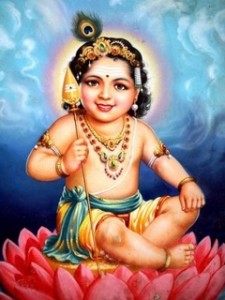 Sanat Kumara is one of the four sons created from the mind of Lord Brahma the creator. Once while meditating in Brahma Loka (Abode of Lord Brahma), he had a vision of fighting against the Asuras. Being a Bramha Jnani (A Self realised soul) who has transcended all the pair of opposites, he was perplexed and wanted an answer from Lord Brahma. The Lord explained that as a Brahmana in his previous birth, he had witnessed Asuras destroying his ashram and in his anger he wanted to destroy them. That thought is the reason behind this dream. The Lord assured him that there may be a purpose behind this dream since the dream of a Jnani should come true.
Sanat Kumara is one of the four sons created from the mind of Lord Brahma the creator. Once while meditating in Brahma Loka (Abode of Lord Brahma), he had a vision of fighting against the Asuras. Being a Bramha Jnani (A Self realised soul) who has transcended all the pair of opposites, he was perplexed and wanted an answer from Lord Brahma. The Lord explained that as a Brahmana in his previous birth, he had witnessed Asuras destroying his ashram and in his anger he wanted to destroy them. That thought is the reason behind this dream. The Lord assured him that there may be a purpose behind this dream since the dream of a Jnani should come true.Lord Subrahmanya was born from the six sacred sparks emanated from the divine third eye of Shiva in the month of Vaishaka and his birth star was Vishaka. The fire god Agni carried the sparks and deposited them in the Sharavana pond and six divine babies were born in a lotus flower who were nursed by six celestial Karthika women. Later Mother Parvati hugged them all and they turned into one child with six faces.
